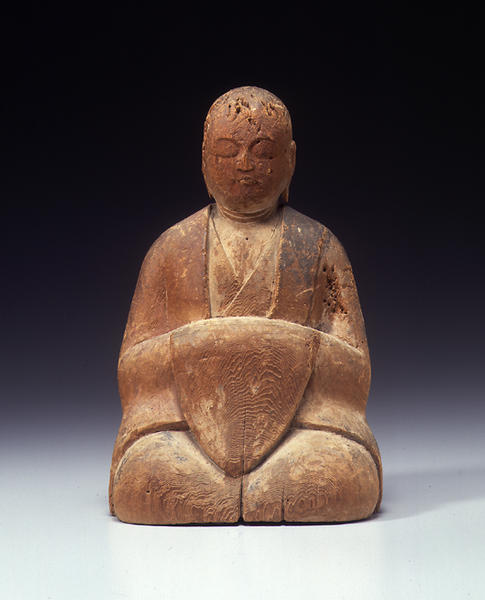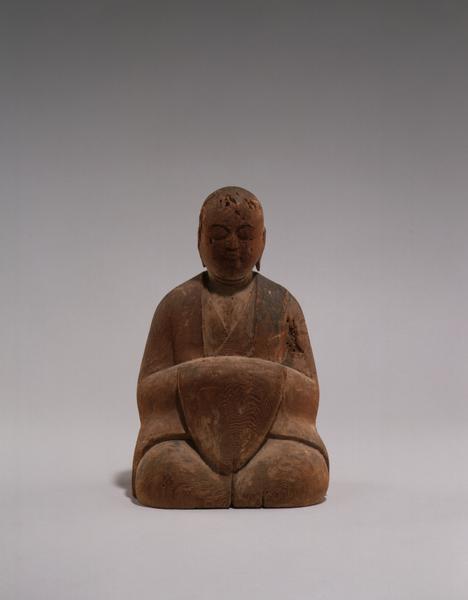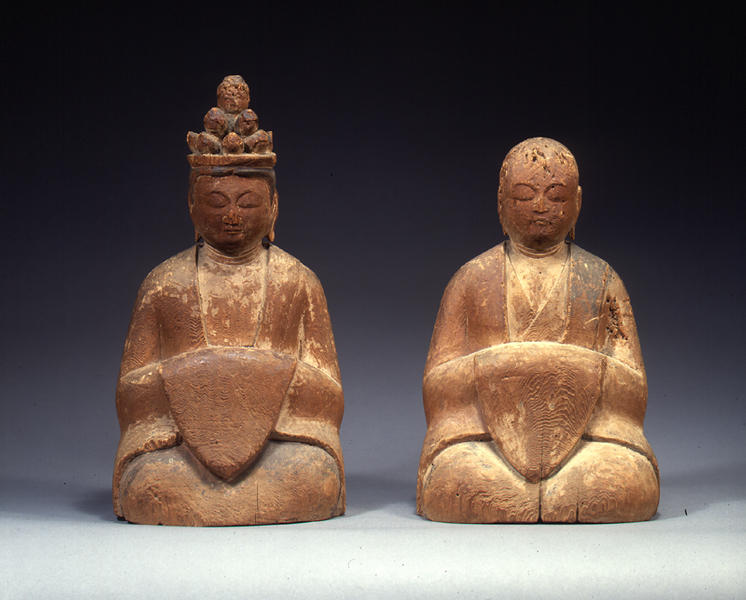Seated Deity in the Guise of a Priest
- Heian period
- 12c
- Wood with pigments
- H-20.3 D-9 W-12.9
- Handed down in Iwashimizu Hachimangu
Catalogue Entry
Both the Eleven‐headed Kannon and the seated monk are shown facing directly forward, and at first glance they have the same format as the seated Shinto deity figures with hands clasped inside their sleeves held up in front of their chests. But if we look at the back of these figures we can see that their large drapery covers the left shoulder and circles to the right hip in a Buddhist robe style, and the priest figure is shown wearing a lower layer, covered by a red over garment, and topped with the Buddhist kesa robe layer. This mixture of robe styles reveals that these figures have Buddhist imagery in their background, while their front appearance is distinctively Shinto in style.
Both figures are carved from single blocks of what appears to be hinoki wood, and neither has been hollowed out. Their stylistic and size similarities seem to indicate that they were originally intended as a pair. The Kannon has a wood grain pattern on its back that is echoed by that on the front of the priest figure, which would suggest that the two figures were carved from the same piece of wood.
The late Heian period saw the spread of a religious form which mixed Buddhist and Shinto traditions. These figures seem to represent Honji Buddhist avatars for placement in Shinto shrines whose carving style was strongly influenced by the main Buddhist styles of the day.
Seated Deity with Eleven Heads


